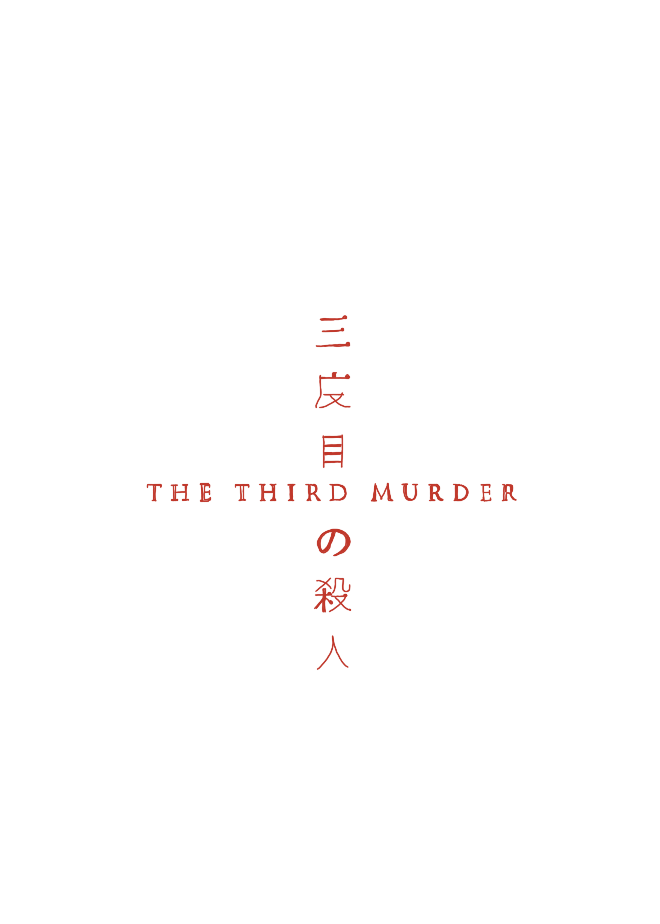
Graphic by Haley Smith
Justice is rarely black and white. The Third Murder, a story of a criminal defense lawyer named Tomoaki Shigemori, explores the contradictory nature of justice. Along with his assistant Kawashima Akira, Shigemori meets a client named Misumi. The client is charged with murder and robbery following the killing of his former boss, Yamanaka, at a food factory.
After the murder, Misumi stole his boss’s wallet and attempted to dispose of the body by burning it. The previous attorney on the case, Settsue, informed Shigemori that Misumi often alters his story. Initially, Misumi told Settsue that he had planned the murder, but later claimed to Shigemori that he was under the influence during the incident.
Shigemori and Kawashima decided the best approach was to reduce the charges, concluding that they could modify the charges to murder and theft. Since the wallet was taken after his murder, they could claim he had no initial intention of stealing the wallet. Kawashima interviewed factory workers at Misumi’s workplace and learned that Misumi had been arguing with Yamanaka over wages, which they could use to argue that Misumi’s motive stemmed from a grudge.
In another meeting, the attorneys showed Misumi an article about a woman who hired a hitman to kill her husband for insurance money. They connected this to a 500,000 yen transfer to Misumi’s bank account before the murder, suggesting that Mitsue Yamanaka, Misumi’s boss’ wife, may have orchestrated the crime. Misumi agreed, claiming the owner’s wife contacted him and promised support if he remained silent. Meanwhile, the victim’s daughter, Sakie, and his wife discussed the money; Mitsue worried about explaining that the 500,000 yen was actually to cover up mislabeled food that could ruin their business.
During a court break, Sakie revealed to Shigemori that her father had raped her and that she had told Misumi she wanted her father dead.
When informed of this, Misumi changed his statement, claiming the money was indeed business-related and that he did not commit the murder. In the following court session, Shigemori advised Sakie against stating Misumi killed her father to give him a better chance in court. Sakie asserted in court that she didn’t believe Misumi was the murderer and didn’t want the death penalty for him. Misumi later alleged that his attorneys and the prosecutors coerced him into pleading guilty. The judge ultimately ruled against Misumi, deciding that his inconsistent claims discredit his defense, and he was sentenced to death.
The film’s ending is left ambiguous, and the audience is left unsure of which of Misumi’s claims were true or if he actually killed Yamanaka.
Donovan Stratton, a member of Wildcat Film Appreciation Society and a freshman in computer science, took issue with the sudden decision to impose the death penalty on Misumi.
“When he took back his confession, they immediately said he was receiving the death sentence,” Stratton said. “I thought that was a bit harsh.”
At just over two hours long, the film has a slow pace. Prasanth Chandran, the secretary of WFAS and a Ph.D. student in psychology, explained why the plot is so lengthy.
“These kinds of films tend to be slow-paced to give us time to think,” Chandran said. “It allows us to consider if he actually killed his boss or not.”
All in all, I would rate this film 2.5 out of 5 stars. While the plot is interesting, its slow pace makes it challenging to stay engaged and fully grasp the storyline. The atmosphere in the film created a chilly and tense environment with muted colors, blank courtroom environments and little background noise besides characters’ conversations. After the WFAS looked through the film’s Wikipedia page, we discovered that the director sought to challenge society’s perception of the legal system’s pursuit of absolute truth, rather than addressing its conflicts of interest. I believe the film effectively represented this message, and the ambiguous ending reinforced the idea that “truth” is shaped by individual perspectives and motivations.